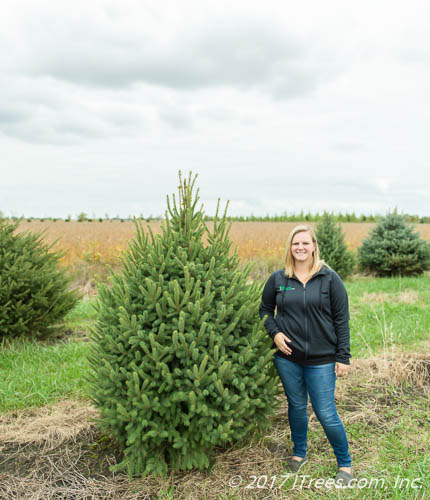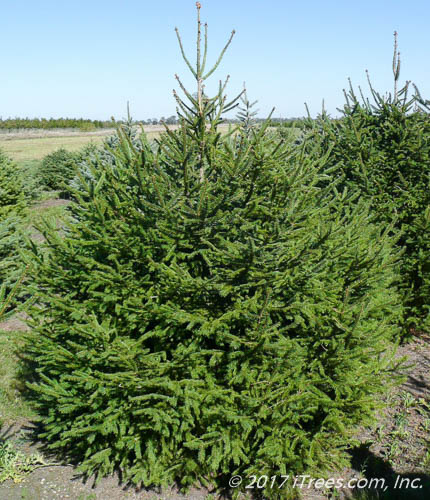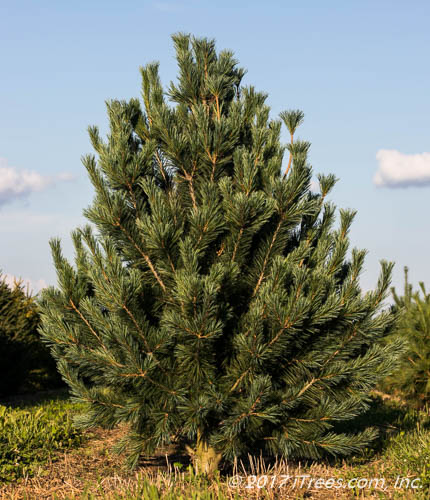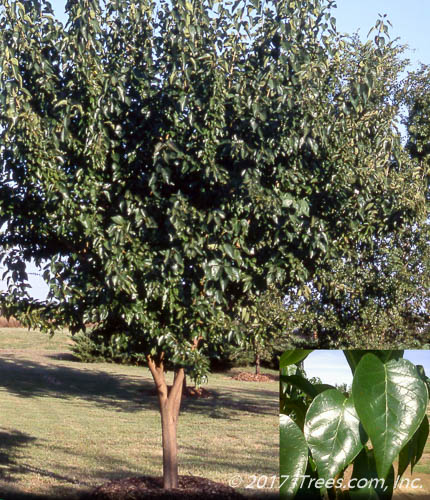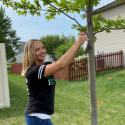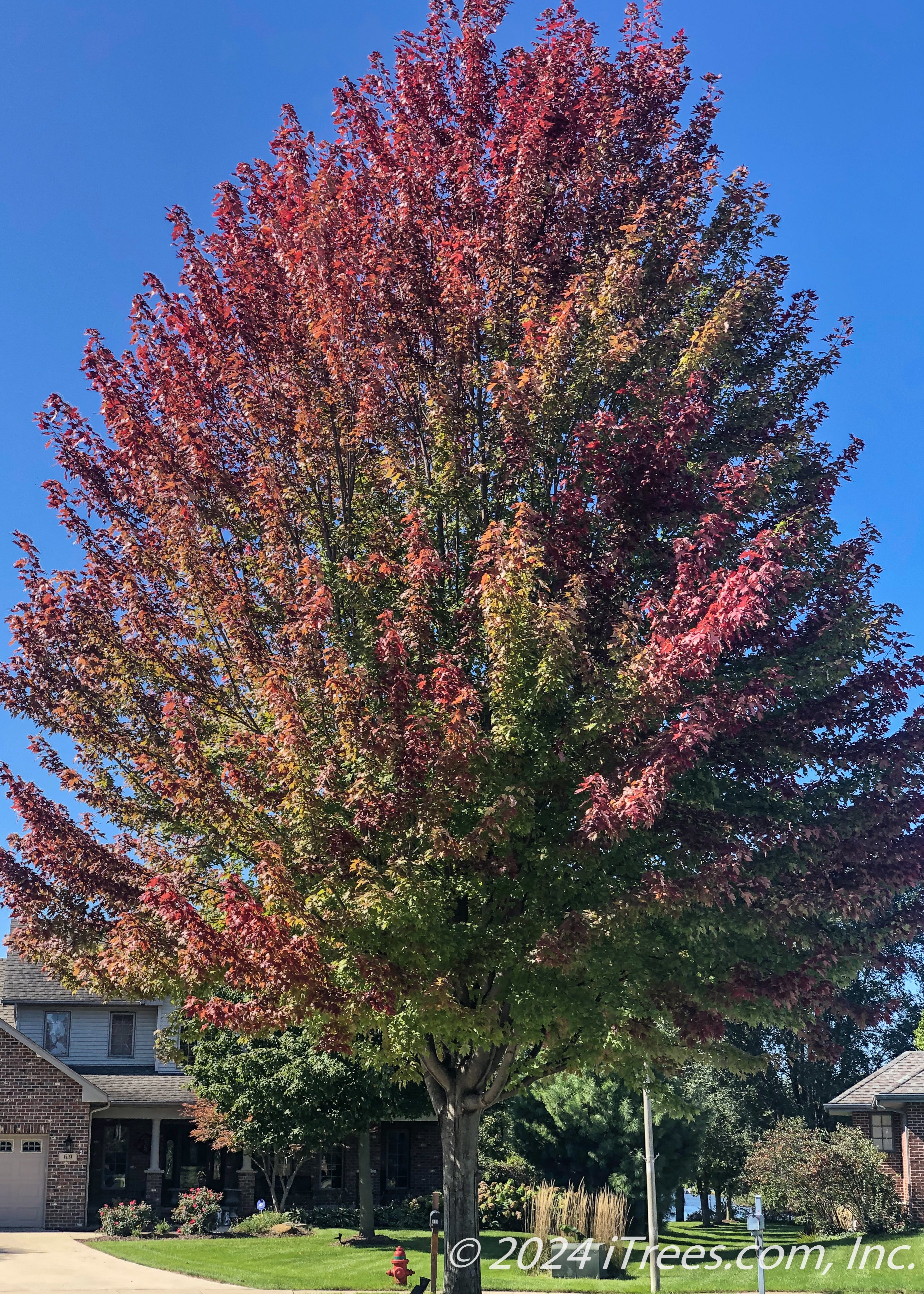
Creating a windbreak is an excellent idea if you want to reduce the general wear and tear of your home and to help to reduce heating costs. Generally, a windbreak is made up of sturdy trees that help to redirect the wind over the top of the trees and in part filter through the trees.
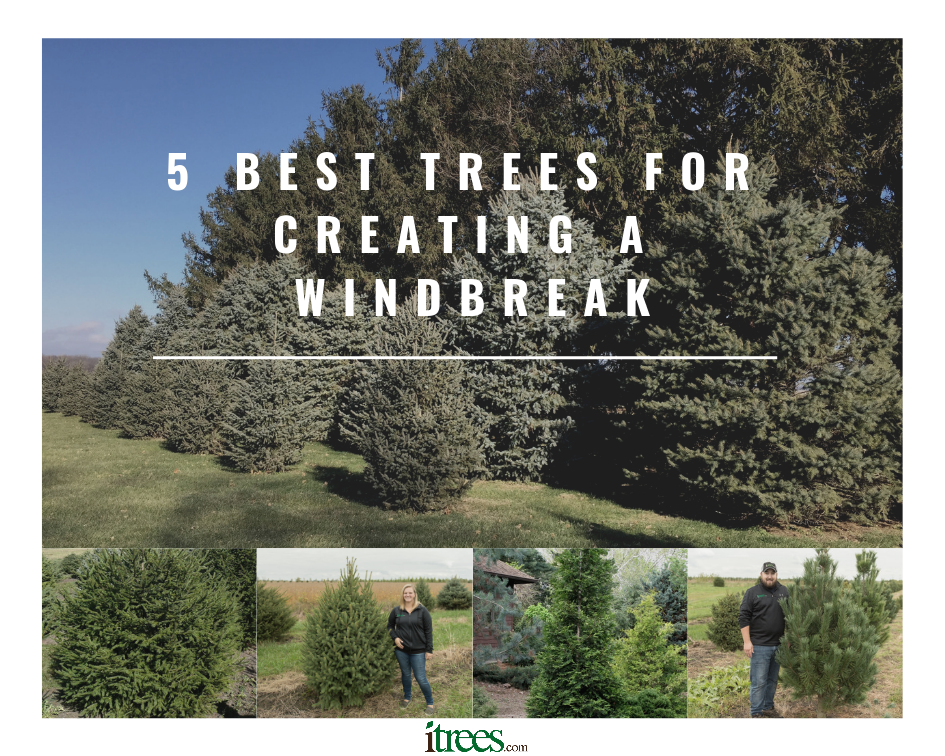
Here we’ve listed our top 5 picks:
1. Black Hills Spruce:
This tree is tough, rugged, dense and cold-hardy which makes it our top pick for creating a windbreak.
2. Norway Spruce:
Norway Spruce has many uses, from a specimen tree in the landscape to act as a privacy tree or even as a large shade tree, to being used to create a windbreak.
3. Vanderwolf's Pyramid Pine:
Our third pick is the versatile Vanderwolf's Pyramid Pine. It can be used along property lines, in planting beds around the house or even in open areas of the lawn and of course, in windbreaks.
4. Green Giant Arborvitae:
This large and vigorous tree is great as a screen, hedge, single specimen or as a windbreak.
5. Colorado Blue Spruce:
This tree is a very popular choice and it does great in well-drained soils. Check out Marlee's Tips for Creating a Windbreak below, you'll see two rows of Colorado Blue Spruce are included in a 4-row windbreak.
***Bonus Tree Suggestions & Tips***
You won’t believe these bonus suggestions… include deciduous and clump form trees into your windbreak! Yes, you read that right! An excellent deciduous tree option would be the ever-hardy White Shield Osage Orange Tree. This is a single-trunk form tree and it's known for its hardy trunk and resilience against strong winds. Another great option would be multi-stem clump form trees such as Dogwood and River Birch trees. The caveat for this to work would be to do a row of Evergreens then a row of deciduous trees or clump form trees to add some texture and visual interest on your property. The second row could be staggered as well for added wind protection. Of course, the main protection from the wind would be the row of Evergreens. It's a good idea to diversify your plantings so that if there's a disease spreading it won't knock out your entire windbreak. Choosing between 2-3 varieties of trees should do the job and keep your property safely protected for many years to come.
One last note, the mature size of a tree should be taken into consideration when planting trees for a windbreak. Other things to consider would be the planting location in relation to the troublesome winds. Ideally, windbreaks are most effective when perpendicular to the prevailing winds. Typically, this would be the northern or northwestern sides of your home. To learn more about tree placement check out our knowledge base articles in our Design Center and head to our resources linked below for more detailed information. As always, if you liked this post please give it a thumbs up on social media or comment on the blog post below. We’d love to hear your thoughts!
Resources:
iTrees.com Design Center: https://itrees.com/kb/topic/design-center/
Plan Your Tree Layout: https://itrees.com/kb/tree-layout.html/
University of Illinois Windbreak Manual: https://web.extension.illinois.edu/forestry/iwm_complete.pdf
Be sure to follow us on social media!


